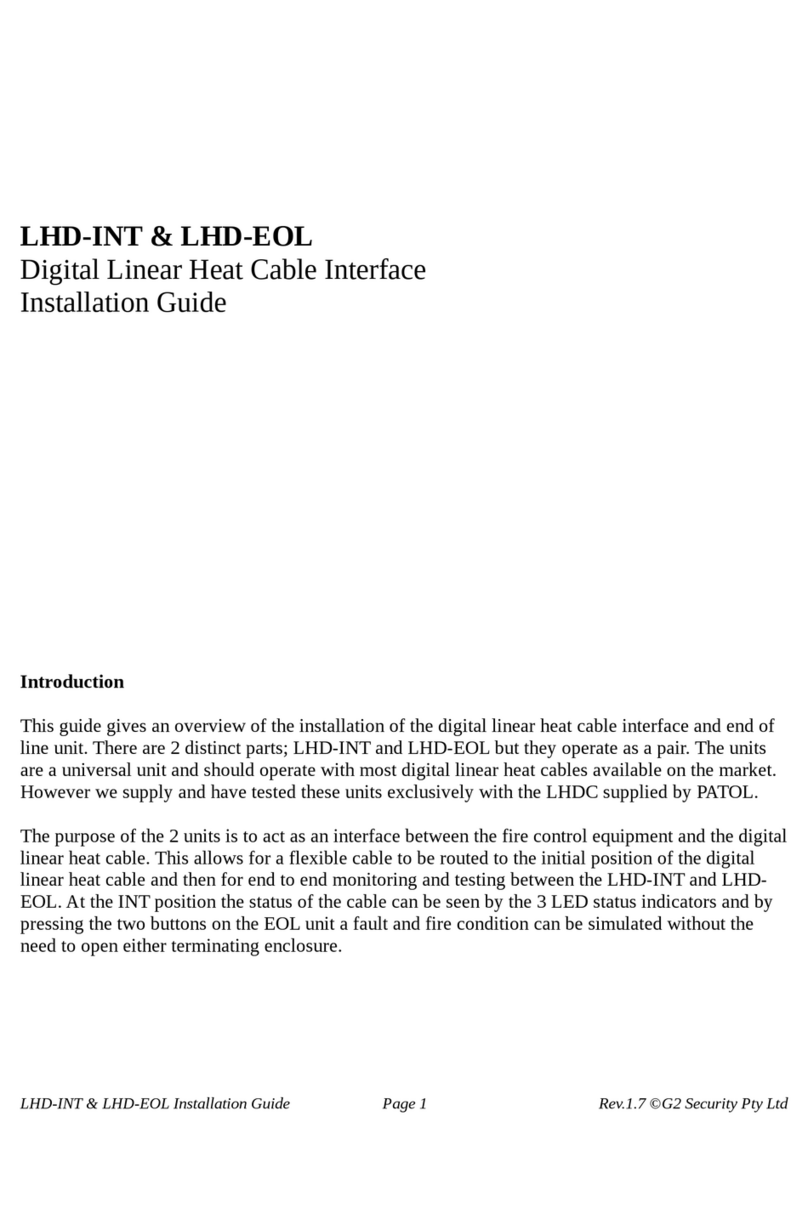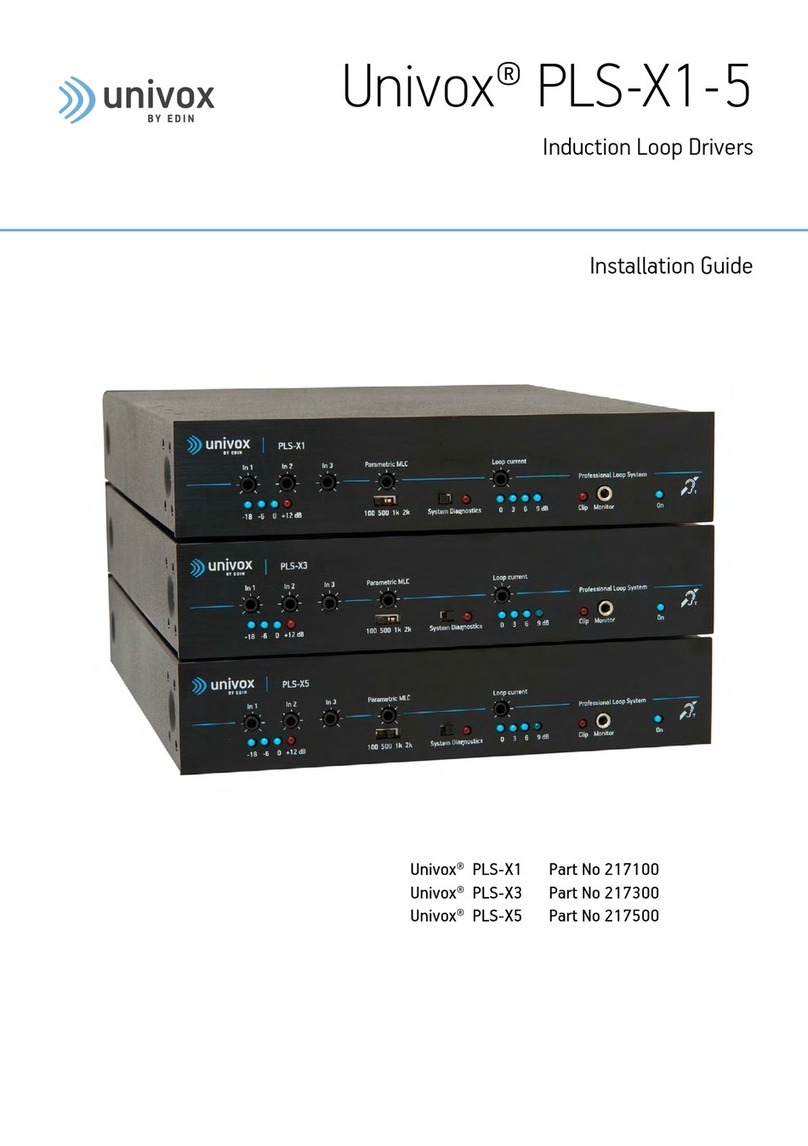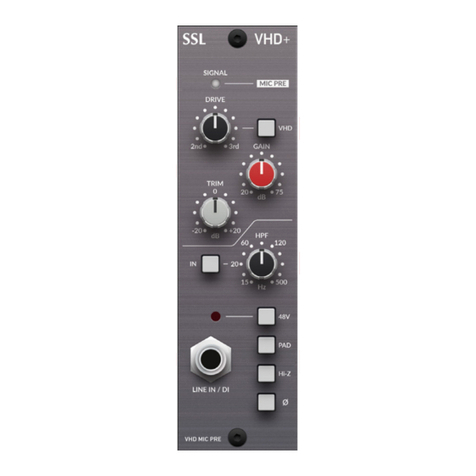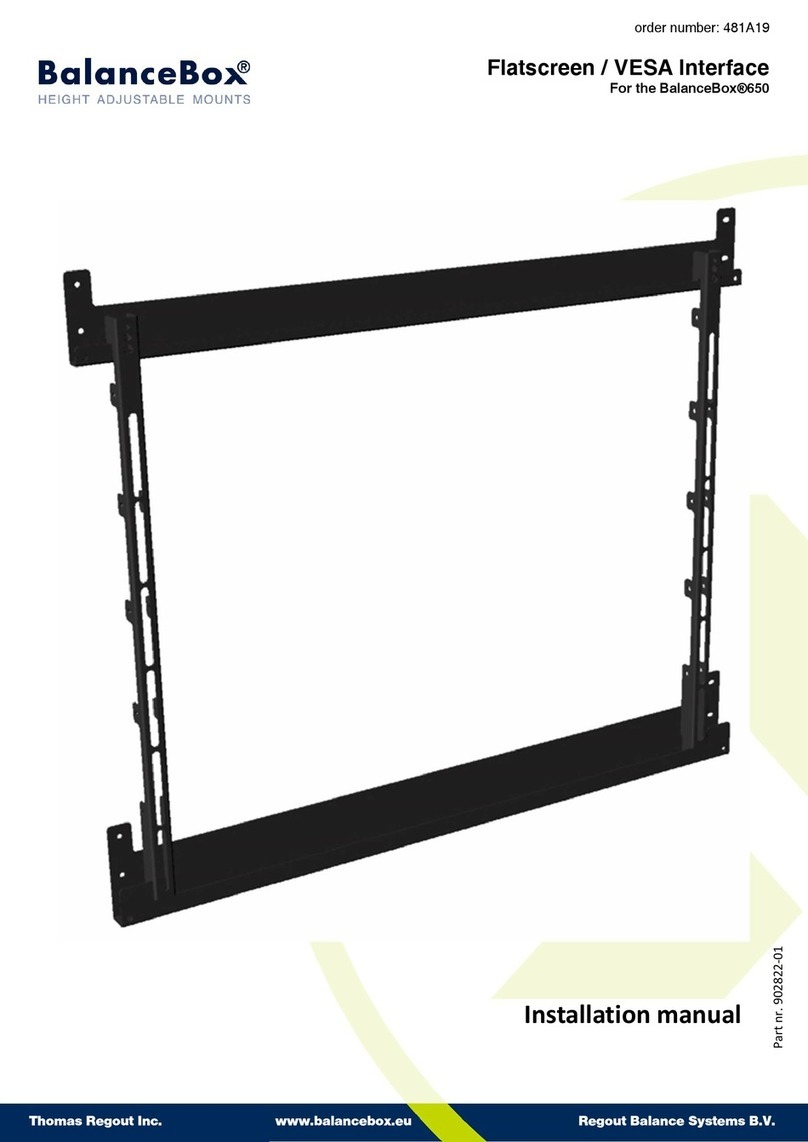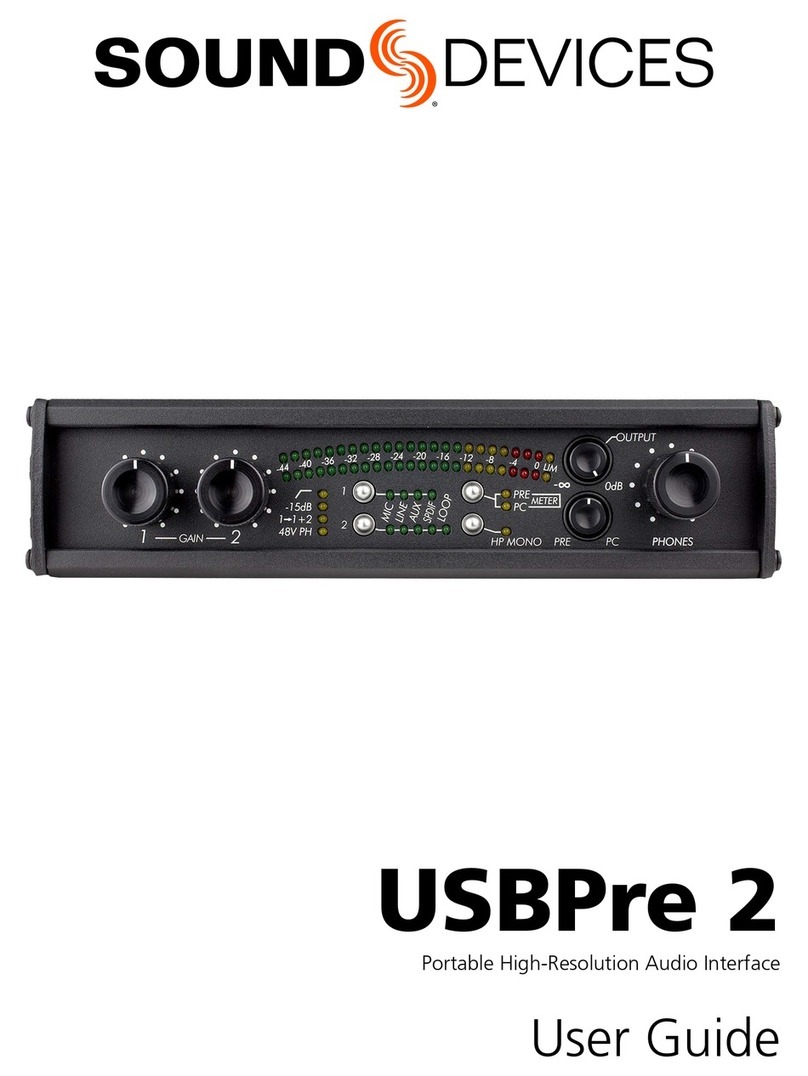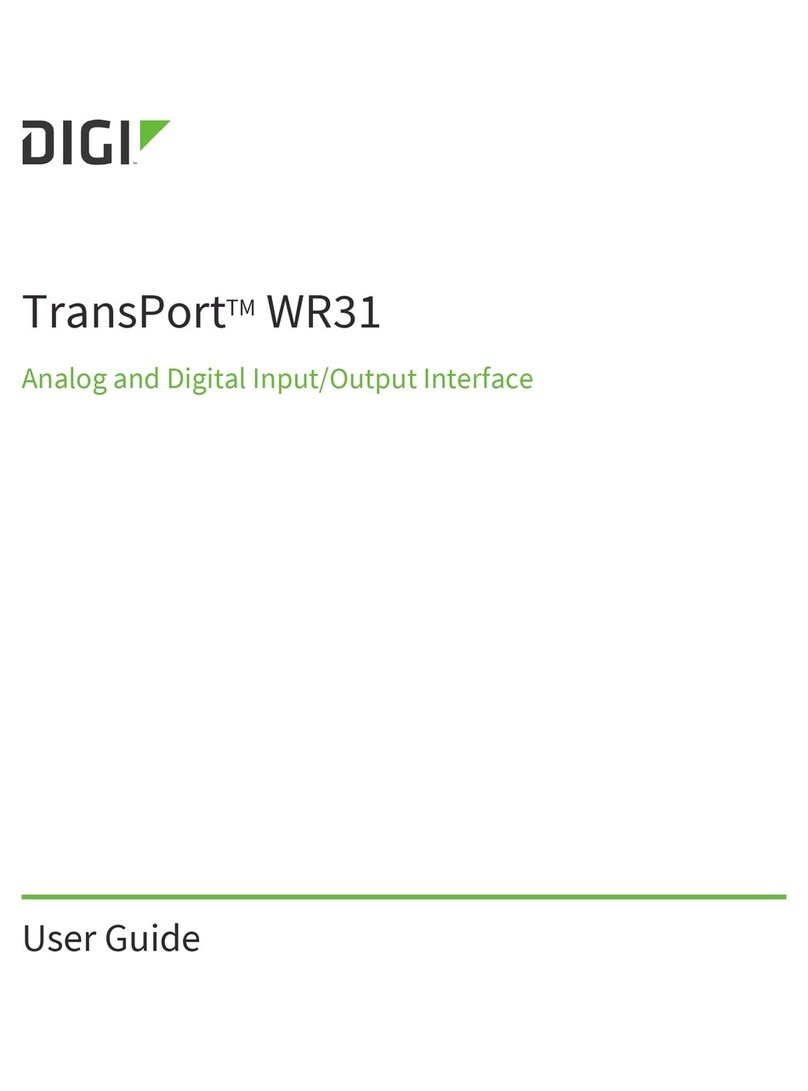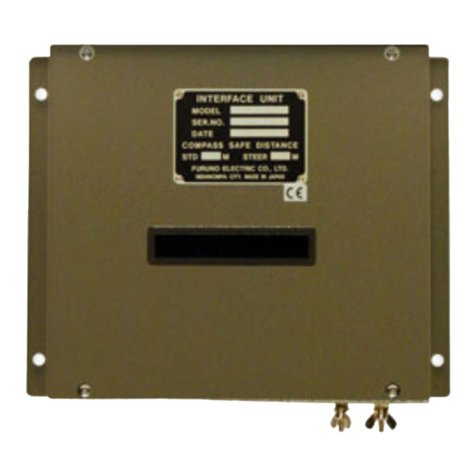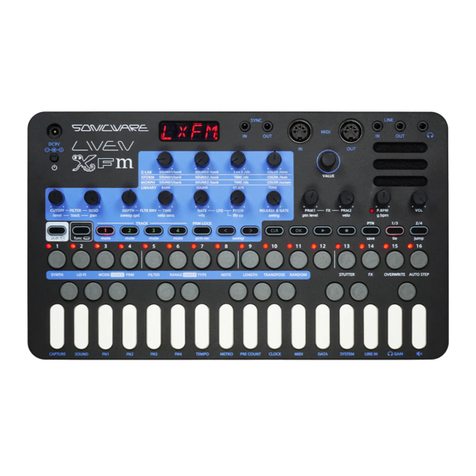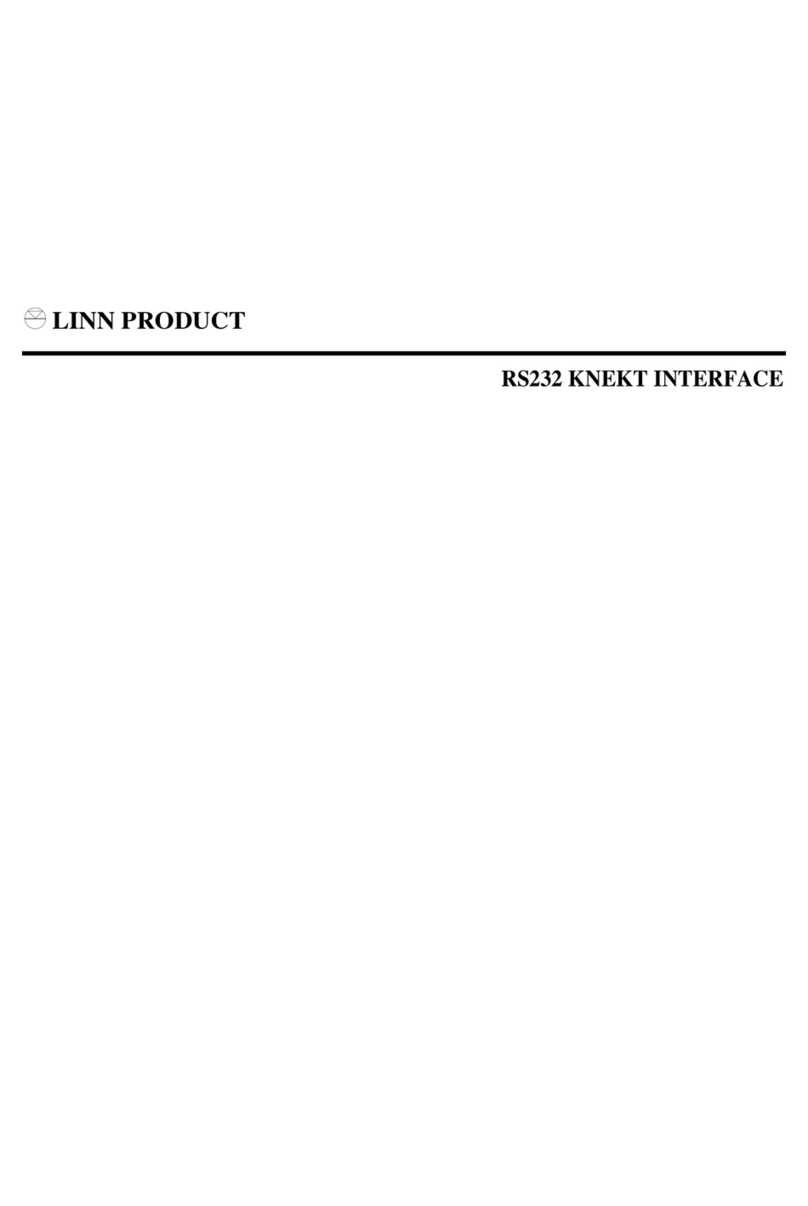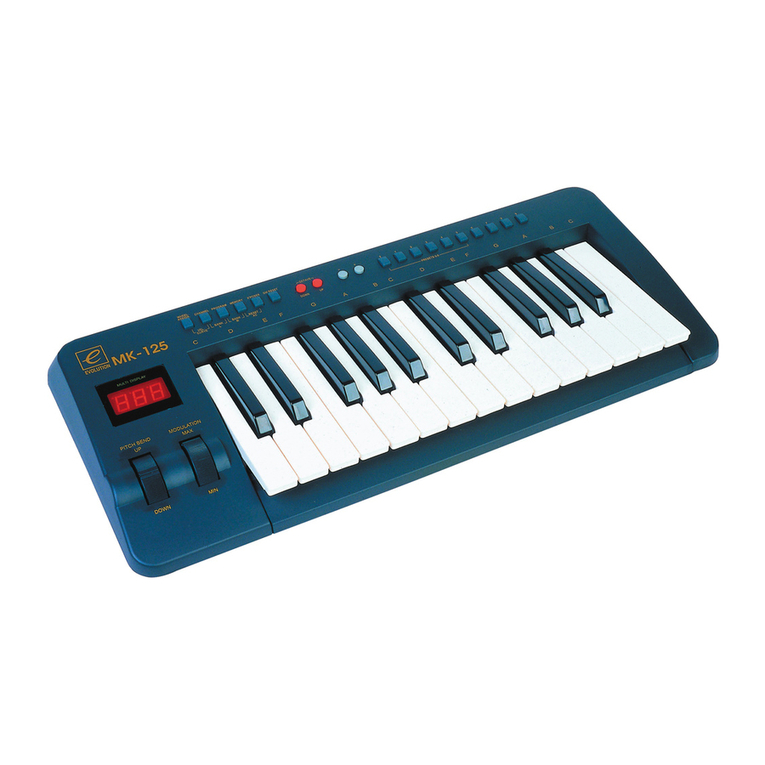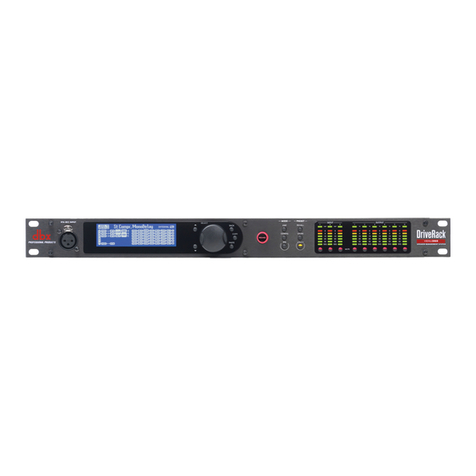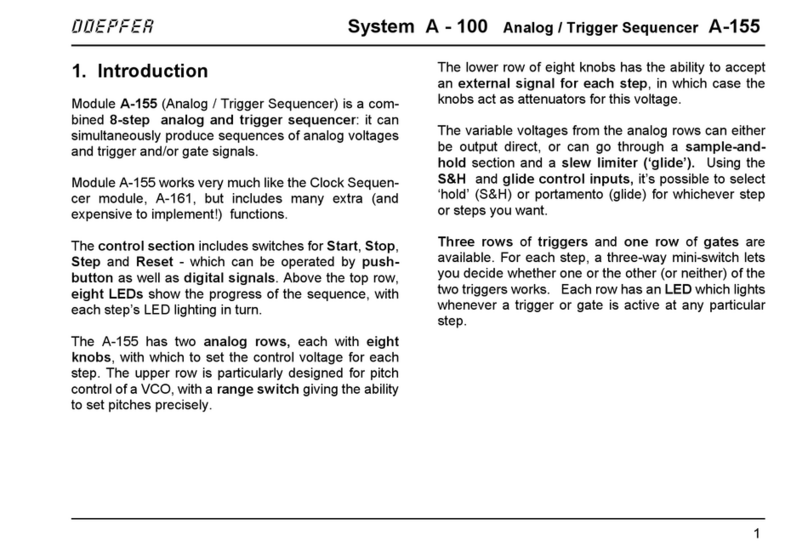Patton electronics NetLink 2701/I User manual

USER
MANUAL
MODEL 2701/I
G.703/G.704 NTU with
10Base-T Ethernet Interface
SALES OFFICE
(301) 975-1000
TECHNICAL SUPPORT
(301) 975-1007
http://www.patton.com
An ISO-9001
Certified Company
Part# 07M2701/I-D
Doc# 086091UD
Revised 11/20/00

1.0 WARRANTY INFORMATION
Patton Electronics warrants all Model 2701/I components to be
free from defects, and will—at our option—repair or replace the prod-
uct should it fail within one year from the first date of shipment.
This warranty is limited to defects in workmanship or materials,
and does not cover customer damage, abuse, or unauthorized modifi-
cation. If this product fails or does not perform as warranted, your sole
recourse shall be repair or replacement as described above. Under no
condition shall Patton Electronics be liable for any damages incurred
by the use of this product. These damages include, but are not limited
to, the following: lost profits, lost savings and incidental or consequen-
tial damages arising from the use of or inability to use this product.
Patton Electronics specifically disclaims all other warranties,
expressed or implied, and the installation or use of this product shall
be deemed an acceptance of these terms by the user.
1.1 RADIO AND TV INTERFERENCE
The Model 2701/I generates and uses radio frequency energy, and
if not installed and used properly—that is, in strict accordance with the
manufacturer's instructions—may cause interference to radio and tele-
vision reception. The Model 2701/I has been tested and found to com-
ply with the limits for a Class A computing device in accordance with
the specifications in Subpart J of Part 15 of FCC rules, which are
designed to provide reasonable protection from such interference in a
commercial installation. However, there is no guarantee that interfer-
ence will not occur in a particular installation. If the Model 2701/I does
cause interference to radio or television reception, which can be deter-
mined by disconnecting the cables, the user is encouraged to try to
correct the interference by one or more of the following measures:
moving the computing equipment away from the receiver, re-orienting
the receiving antenna, and/or plugging the receiving equipment into a
different AC outlet (such that the computing equipment and receiver
are on different branches).
1.2 CE NOTICE
The CE symbol on your Patton Electronics equipment indicates
that it is in compliance with the Electromagnetic Compatibility (EMC)
directive and the Low Voltage Directive (LVD) of the Union European
(EU). A Certificate of Compliance is available by contacting Technical
Support.
1
1.3 SERVICE
All warranty and nonwarranty repairs must be returned freight pre-
paid and insured to Patton Electronics. All returns must have a Return
Materials Authorization number on the outside of the shipping contain-
er. This number may be obtained from Patton Electronics Technical
Support at:
tel: (301) 975-1007;
www: http://www.patton.com.
Patton Electronics' technical staff is also available to answer any
questions that might arise concerning the installation or use of your
Patton Model 2701/I. Technical Support hours: 8AM to 5PM EST,
Monday through Friday.
2
WARNING! This device is not intended to be con-
nected to the public telephone network.
NOTE: Packages received without an RMA number will not
be accepted.

2.0 GENERAL INFORMATION
Thank you for your purchase of this Patton Electronics product.
This product has been thoroughly inspected and tested and is warrant-
ed for One Year parts and labor. If any questions or problems arise
during installation or use of this product, please do not hesitate to con-
tact Patton Electronics Technical Support at (301) 975-1007.
2.1 FEATURES
• Terminates G.703 and G.704, E1/fractional E1 service
• Available in low-cost standalone or rack-mountable versions
• n x 64 kbps data rates to 2.048 Mbps
• 10Base-T Ethernet bridge
• PPP (Point to Point Protocol, RFC 1661) with Bridge Control
Protocol (RFC 1638)
• 75-ohm dual coax and 120-ohm twisted-pair G.703 connections
• Local and remote loopback diagnostics
• Internal and G.703 network timing
• CE and BABT approvals
• 90-260VAC & 48VDC power options
• Conforms to ONP requirements CTR 12 and CTR 13 for connec-
tion to international Telecom networks
2.2 DESCRIPTION
The Model 2701/I receives channelized G.704 (n x 64kbps) or
clear channel E1/G.703 (2.048-Mbps) data from the telco's digital data
network. The Model 2701/I terminates the G.703 telco interface and
converts the data for transmission to a user-oriented 10Base-T (802.3)
Ethernet interface.
The Model 2701/I supports an integrated 10Base-T (802.3)
Ethernet port with transparent bridging capability for IP, IPX, DECnet,
NetBIOS and other layer-3 protocols. The 2701/I attaches to the LAN
and intelligently bridges data traffic to the large central site router
through the telco's leased line network. The 2701/I supports PPP (RFC
1661) and BCP (RFC 1638).
The Model 2701/I is a 10Base-T bridge that operates over
G.703/G.704 lines. It uses MAC learning and forwarding to provide
seamless LAN-to-LAN connectivity. As a result, corporate enterprises
can connect their servers to a pair of NTUs and automatically forward
data packets that are meant for the remote network. Local packets are
filtered and passed only to the local LAN.
3
3.0 PPP Operati nal Backgr und
PPP is a protocol used for multi-plexed transport over a point-
to-point link. PPP operates on all full duplex media, and is a sym-
metric peer-to-peer protocol, which can be broken into three main
components: 1. A standard method to encapsulate datagrams
over serial links; 2. A Link Control Protocol (LCP) to establish, con-
figure, and test the data-link connection; 3. A family of Network
Control Protocols (NCPs) to establish and configure different net-
work layer protocols.
In order to establish communications over a point-to-point link,
each end of the PPP link must first announce its capabilities and
agree on the parameters of the link’s operation. This exchange is
facilitated through LCP Configure-Request packets.
Once the link has been established and optional facilities have
been negotiated, PPP will attempt to establish a network protocol.
PPP will use Network Control Protocol (NCP) to choose and con-
figure one or more network layer protocols. Once each of the net-
work layer protocols have been configured, datagrams from the
established network layer protocol can be sent over the link. The
link will remain configured for these communications until explicit
LCP or NCP packets close the link down, or until some external
event occurs.
The PPP Bridging Control Protocol (BCP), defined in RFC
1638, configures and enables/disables the bridge protocol on
both ends of the point-to-point link. BCP uses the same
packet exchange mechanism as the Link Control Protocol
(LCP). BCP is a Network Control Protocol of PPP, bridge
packets may not be exchanged until PPP has reached the
network layer protocol phase.
3.1 APPLICATIONS
In situations where a routed network requires connectivity
to a remote Ethernet network, the interface on a router can
be configured as a PPP IP Half Bridge. The serial line to the
remote bridge functions as a Virtual Ethernet interface, effec-
tively extending the routers serial port connection to the
remote network. The bridge device sends bridge packets
(BPDU's) to the router's serial interface. The router will
receive the layer three address information and will forward
these packets based on its IP address.
Figure 1 shows a typical Cisco router with a serial interface
configured as a PPP Half Bridge. The router serial interface uses
a remote device that supports PPP bridging to function as a node
on the remote Ethernet network. The serial interface on the
Cisco will have an IP address on the same Ethernet subnet as
the bridge.
4

4.0 CONFIGURATION
The Model 2701/I features configuration capability via hardware
DIP switches. This section describes all possible DIP switch configura-
tions of the Model 2701/I.
4.1 DIP SWITCH CONFIGURATION
The Model 2701/I has two sets of internal DIP switches that allow
configuration for a wide range of applications. The sets of switches are
accessed from the underside. Figure 3 (below) shows the location of
the DIP switches on the bottom of the printed circuit board.
The Model 2701/I DIP switches (Switch Sets 1-2) can be config-
ured as either “ON” or “OFF”. Figure 4 (below) shows the orientation
of the DIP switches with respect to ON/OFF positions.
6
Figure 3. Underside of Model 2701/I, Showing Location of DIP Switches
Front
Rear
ON
S1
S2
OFF
Figure 4. Close up of configuration switches
OFF
ON
ON
For example, the customer site is assigned the addresses
192.168.1.0/24 through 192.168.1.1/24. The address
192.168.1.1/24 is also the default gateway for the remote net-
work. The above settings remove any routing/forwarding intel-
ligence from the CPE. The associated Cisco configuration will
set serial interface (s0) to accommodate half bridging for the
above example.
Authentication is optional under PPP. In a point-to-point
leased-line link, incoming customer facilities are usually fixed
in nature, therefore authentication is generally not required. If
the foreign device requires authentication via PAP or CHAP,
the PPP software will respond with default Peer-ID consisting
of the units Ethernet MAC address and a password which
consists of the unit’s Ethernet MAC address.
Some networking systems do not define network numbers
in packets sent out over a network. If a packet does not have
a specific destination network number, a router will assume
that the packet is set up for the local segment and will not for-
ward it to any other sub-network. However, in cases where
two devices need to communicate over the wide-area, bridg-
ing can be used to transport non-routable protocols.
Figure 2 illustrates transparent bridging between two
routers over a serial interface (s0). Bridging will occur
between the two Ethernet Interfaces on Router A (e0 and e1)
and the two Ethernet Interfaces on Router B (e0 and e1).
Patton
2701/I
Bridge
Ethernet LAN
PEC Device w/ Serial I/F
Router
Figure 1. Cisco router with serial interface, configured as PPP Half Bridge.
!
no ip routing
!
interface Ethernet0
ip address 1.1.1.1 255.255.255.0
bridge-group 1
!
interface Serial0
ip address 1.1.1.1 255.255.255.0
encapsulation PPP
bridge-group 1
!
interface Serial1
ip address 2.2.2.2 255.255.255.0
bridge-group 1
!
bridge 1 protocol ieee
!
Router A
Router B
e0
e0
S1
e1
S1
S0
S0
LAN LAN
LAN LAN LAN
Serial Interface
Serial Interface
Using Bridge-Groups, multi-
ple remote LANs can be
bridged over the wide-area.
5
2701/I
2701/I
E1/FE1 Link
E1/FE1 Link
Figure 2. Transparent bridging between two routers over a serial interface.

Switch SW1-1 through SW1-5
A detailed description of each switch (SW1-1 through SW1-5) setting
follows the summary table below.
Use Switches SW1-5 to set the DTE data rate.
SW1 SW2 SW3 SW4 SW5 Speed
ON ON ON ON ON 64kbps
OFF ON ON ON ON 128kbps
ON OFF ON ON ON 192kbps
OFF OFF ON ON ON 256kbps
ON ON OFF ON ON 320kbps
OFF ON OFF ON ON 384kbps
ON OFF OFF ON ON 448kbps
OFF OFF OFF ON ON 512kbps
ON ON ON OFF ON 576kbps
OFF ON ON OFF ON 640kbps
ON OFF ON OFF ON 704kbps
OFF OFF ON OFF ON 768kbps
ON ON OFF OFF ON 832kbps
OFF ON OFF OFF ON 896kbps
ON OFF OFF OFF ON 960kbps
OFF OFF OFF OFF ON 1024kbps
ON ON ON ON OFF 1088kbps
OFF ON ON ON OFF 1152kbps
ON OFF ON ON OFF 1216kbps
OFF OFF ON ON OFF 1280kbps
ON ON OFF ON OFF 1344kbps
OFF ON OFF ON OFF 1408kbps
ON OFF OFF ON OFF 1472kbps
OFF OFF OFF ON OFF 1536kbps
ON ON ON OFF OFF 1600kbps
OFF ON ON OFF OFF 1664kbps
7
ON OFF ON OFF OFF 1728kbps
OFF OFF ON OFF OFF 1792kbps
ON ON OFF OFF OFF 1856kbps
OFF ON OFF OFF OFF 1920kbps
ON OFF OFF OFF OFF 1984kbps
OFF OFF OFF OFF OFF Clear Channel 2048kbps
NOTE: When the data rate is set to 2.048Mb/s, then the unit is
forced into G.703 mode, and it transmits user data on all 32 time-
lots.There is no framing information; therefore, the CRC4 MF
(SW2-2) switch is ignored. In all other rate settings, the unit
employs G.704 framing; TS0 is reserved for signaling.
SW1-6 and SW1-7 CLOCK MODES
Network Clock Transmitter timing is derived using the received line
signal (received recovered) from the network.
Internal Clock Transmitter timing is derived from an internal clock
source.
SWITCH SW2-1 LINE CODING: HDB3
(DEFAULT)
Use Switch SW2-1 to control the Network Line Coding options.
Set these options to be the same as the Line Coding given to you by
8
SWITCH SET 1 SUMMARY TABLE
Position Function Factory Default Selected Option
SW1-1 DTE Rate Off
SW1-2 DTE Rate Off
SW1-3 DTE Rate Off
SW1-4 DTE Rate Off
SW1-5 DTE Rate Off
SW1-6 Clock Mode Off Receive Recovered
SW1-7 Clock Mode Off Receive Recovered
SW1-8 Not Used N/A N/A
2.048 Mbps
Clear
Channel
}
SW1-6 SW1-7 Clock Mode
On On Network (Recieved Recovered)
On Off Internal
Off On Internal
Off Off Network (Recieved Recovered)
SWITCH SET 2 SUMMARY TABLE
Position Function Factory Default Selected Option
SW2-1 Line Coding OFF HDB3
SW2-2 CRC-4 multiframe OFF Disabled
SW2-3 Data Inversion OFF Data Not Inverted
SW2-4 V.54/CSU select OFF
V.54 RDL loop
SW2-5 FPS enabled OFF Enabled
SW2-6 V.54 Response OFF Enabled
SW2-7 Not Used OFF N/A
SW2-8 Not Used OFF N/A

your Service Provider. If you are using two Model 2701/Is together as
short range modems, set both units to HDB3.
SW2-1 Line Encoding
OFF HDB3
ON AMI
OPTIONS: HDB3, AMI
HDB3: In this line coding, the transmitter substitutes a deliberate
bipolar violation when excessive zeros in the data stream are
detected.The receiver recognizes these special violations and
decodes them as zeros. This method enables the network to
meet minimum pulse density requirements. Unless AMI is
required in your application, HDB3 should be used whenever
possible.
AMI: Alternate Mark Inversion defines a pulse as a "mark,” a
binary one, as opposed to a zero. In an E1 network connec-
tion, signals are transmitted as a sequence of ones and zeros.
Ones are sent as pulses, and zeros are sent as spaces, i.e.,
no pulse. Every other pulse is inverted from the previous
pulse in polarity, so that the signal can be effectively transmit-
ted.This means, however, that a long sequence of zeros in
the data stream will cause problems, since the NTU receiving
the signal relies on the signal to recover the 2.048 Mb/s clock.
If you must use AMI, you should ensure that the data terminal
equipment connected to the unit provides a minimally accept-
able pulse density. For this reason, there are advantages to
using HDB3 instead. AMI coding does not inherently account
for ones density. To meet this requirement, the user should
ensure that the data inherently meets pulse density require-
ments.
SWITCH SW2-2: CRC-4 MULTIFRAME
In framed mode, SW2-2 is used for CRC-4 MF.When CRC-4 is
enabled, the unit monitors the incoming data stream for CRC-4 errors.
It transmits CRC-4 error counts to the transmitting unit.When using
timeslot zero (TS0), excessive errors may cause loss of frame or loss
of sync. If CRC-4 MF is used, both units must be set for set for CRC-4
MF. Otherwise, the one using CRC-4 MF will detect loss of sync.
SW2-2 Option
Off CRC-4 Disabled
On CRC-4 Enabled 9
NOTE: When the data rate is set to 2.048Mb/s, then the unit is
forced into G.703 mode, and it transmits user data on all 32 time-
lots.There is no framing information; therefore, the CRC4 MF
(SW2-2) switch is ignored. In all other rate settings, the unit
employs G.704 framing; TS0 is reserved for signaling.
SWITCH SW2-3 DATA INVERSION
Set Switch S2-3 to determine whether or not the data stream from the
local DTE is inverted within the Model 2701/I before being passed to
the G.703/G.704 network. An inverted data stream may be required
when you use the Model 2701/I to communicate with a G.703 device
(that inverts the data) on the remote end. In typical installations, data
inversion is not necessary.
SW2-3 Option
Off Data not inverted
On Data inverted
SWITCH SW2-4: REMOTE DIGITAL LOOPBACK TYPE
The user can set this variable to select the type of remote loop that will
be initiated by the Model 2701/I. If set to V.54, the Model 2701/I will
initiate a V.54 loop when Remote Loop is selected by the front panel
switches. If set to CSU, the Model 2701/I will initiate a CSU loop when
Remote Loop is selected by the front panel switches.
S2-4 RDL Type
Off Initiate a V.54 RDL loop when selected
On Initiate a CSU loopback when selected
SWITCH SW2-5 FRONT PANEL SWITCHES
As the Front Panel Switches may be inadvertently toggled, or in the
event that the end-user may not need to use the switches, the installer
may disable the front panel switches. Set Switch S2-5 to determine
whether the front-panel toggle switches are active or inactive.
SW2-5 Option
Off Front Panel Switches Enabled
On Front Panel Switches Disabled
10

SWITCH SW2-6: V.54 RESPONSE ENABLED
(DEFAULT)
V.54 is a special in-band loopback facility that sends a pseudo-random
pattern over the data stream. This is the only loopback that the unit
can initiate. This is useful for campus applications when you need to
put a remote unit in loopback. The unit responds to the V.54 loopback
command, and the whole process takes only a few seconds to com-
plete. When V.54 Loopback is disabled, the unit will not be able to
respond to V.54 loopback commands.
SW2-6 Option
Off V.54 Response Enabled
On V.54 Response Disabled
11 12
55..00 IINNSSTTAALLLLAATTIIOONN
Once the Model 2701/I is properly configured, it is ready to con-
nect to the G.703/G.704 interface, to the Ethernet port, and to the
power source. This section describes how to make these connections.
5.1 CONNECTING TO THE G.703 NETWORK
The Power, G.703/G.704 and Ethernet Line connections are
located on the rear panel of the Model 2701/I. Figure 5, below, shows
the location of each of these ports.
5.1.1
Connecting Dual Coaxial Cable (75 ohm) to the G.703 Network
The Model 2701/I is equipped with dual female BNCs (TX and RX)
for connection to a 75 ohm dual coax G.703 network interface. If your
G.703/G.704 network terminates via dual coaxial cable, use the dia-
gram below to make the proper connections. See Figure 6 below.
NOTE: The outer conductor of the coax cables are isolated from
system earth ground.
When using the 75 Ohm interface, jumper straps JP2, JP5, JP6,
and JP7 must be installed over the jumpers. The jumpers are located
next to the BNC connectors. Refer to the following section to open the
case. Open the case and install jumper straps for JP2, JP5, JP6, and
JP7.
TX RX
Data TO
Network Data
FROM
Network
Figure 6: Rear Panel, Showing Location of Connectors.
75 Ohm 120 Ohm
TX RX
Ethernet
Figure 5. Model 2701/I Rear Panel

5.1.2 Opening the Case
Open the case by inserting a screwdriver into the slots and twist
the screwdriver head slightly. The top half of the case will separate
from the lower half of the case. Take caution not to damage any of the
PC board mounted components.
5.1.2 Connecting the Twisted Pair (120 ohm) to the G.703
Network
The Model 2701/I is equipped with a single RJ-48C jack for con-
nections to a 120 ohm twisted pair G.703/G.704 network interface. If
your G.703/G.704 network terminates via RJ-48C, use the connection
diagram (Figure 7) following the pinout and signals chart below to con-
nect the 120 ohm G.703/G.704 network channel.
RJ-45 Cable (8-Wire)
G.703/G.704 2701/I
NETWORK SIGNAL SIGNAL
PIN#
RX+ 1-----------------------TX+
RX- 2-----------------------TX-
TX+ 5-----------------------RX+
TX- 4-----------------------RX
Shield 3-----------------------Shield
Shield 6-----------------------Shield
13
5.2 Connecting the 10Base-T Ethernet Port to a PC (DTE)
The 10Base-T interface is configured as DTE (Data Terminal
Equipment). If the Model 2701/I is to to connect to another DTE
device such as a 10Base-T network interface card, construct a
10Base-T crossover cable and connect the wires as shown in the dia-
gram below (Figure 8).
10BaseT Port 10Base-T DTE
RJ-45 Pin No. RJ-45 Pin No.
1 (TD+) 1 (TD+)
2 (TD-) 2 (TD-)
3 (RD+) 3 (RD+)
6 (RD-) 6 (RD-)
5.3 Connecting the 10Base-T Ethernet Port to a Hub
The 10Base-T interface is configured as DTE (Data Terminal
Equipment), just like a 10Base-T network interface card in a PC.
Therefore, it “expects” to connect to a 10Base-T Hub using a straight-
through RJ-45 cable. Use the diagram below (Figure 9) to construct a
cable to connect the 10 BaseT interface to a 10Base-T Hub.
10BaseT Port 10Base-T Hub
RJ-45 Pin No. RJ-45 Pin No.
1 (TD+) 1 (RD+)
2 (TD-) 2 (RD-)
3 (RD+) 3 (TD+)
6 (RD-) 6 (TD-)
14
(No Connection) 8
(No Connection) 7
(No Connection) 6
(TX+) 5
(TX-) 4
(No Connection) 3
(RX-) 2
(RX+) 1
8
7
6
5
4
3
2
1
1 TD+ (data output from 2701/I)
2 TD- (data output from 2701/I)
3 RD+ (data input to 2701/I)
4 (no connection)
5 (no connection)
6 RD- (data input to 2701/I)
7 (no connection)
8 (no connection)
1
2
3
4
5
6
7
8
Figure 7: G.703/G.704 170 Ohm Connection.
Figure 8: Connecting the 10Base-T Ethernet Port to a PC
Figure 8: 10Base-T Cross-over Cable Connection
Figure 9: Connecting the 10Base-T Ethernet Port to a Hub

15
5.4 POWER CONNECTION
Universal AC Power (100-240VAC)
The Model 2701/I uses a 5VDC, 2A universal input 100-240VAC,
power supply (center pin is +5V). The universal input power supply
has a male IEC-320 power entry connector. This power supply con-
nects to the Model 2701/I by means of a barrel jack on the rear panel.
Many international power cords are available for the universal power
supply.
The Model 2701/I powers up as soon as it is plugged into an AC
outlet--there is no power switch.
DC Power
The 36-60 VDC DC to DC adapter supplied with the DC version of
the Model 2701/I plugs in a DC source (nominal 48VDC) and plugs
into the barrel power supply jack on the rear of the 2701/I. Please
refer to Figure 10, below, to make the proper connection.
16
66..00 OOPPEERRAATTIIOONN
When the Model 2701/I has been properly configured and
installed, it should operate transparently. This sections describes
power-up, LED status monitors, and the built-in loopback test modes.
6.1 POWER-UP
Before applying power to the Model 2701/I, please read Section
5.4 and ensure that the unit is properly connected to the appropriate
power source.
6.2 LED STATUS MONITORS
The Model 2701/I features six front panel LEDs that monitor con-
nections on the G.703/G.704 and 10BaseT links, signaling, error and
test modes. Figure 11 (below) shows the front panel location of each
LED. Descriptions of each LED follow Figure 11.
E1 Link (Active Green) Solid green (On) indicates that the
end to end E1 Link is up, signifying that the link is
active. The E1 Link LED is Off when the link is
down.
10BT Link (Active Green) Solid green indicates that the
10BaseT Ethernet interface has detected a valid
SQE heartbeat, signifying a valid 10BaseT con-
nection.
Status Blinks yellow from one to eleven times to indicate
system status. Each pulse pattern is separated by
a 2 second “off” period. Greater pulse patterns
have higher priority (buffer saturation has greater
priority than an empty MAC table). Valid system
statuses are:
1 pulse = system status is okay
2 pulses = no MAC entries in the MAC
Address Table
WARNING! There are no user-serviceable parts in the
power supply section of the Model 2701/I. For more informa-
tion, please contact Patton Electronics Technical Support at
(301)975-1007
, via our web site at http://www.patton.com, or
Figure 10: Connecting DC Power to the 2701/I DC Power Supply.
Figure 11: 2701/I Front Panel
+ Vin
To Power
Supply Jack
- Vin
To -48VDC
Source

3 pulses = Clear to Send (CTS) or Carrier
Detect (DCD) from base unit are not
asserted
4 pulses = IM1/I buffer is saturated
5 pulses = WAN receive frame(s) too large
6 pulses = WAN receive frame(s) not octet
aligned
7 pulses = WAN receive frame(s) aborted
8 pulses = Detected WAN receive frame(s) with
CRC
9 pulses = Detected LAN receive frame(s) too
large
10 pulses = Detected LAN receive frame(s) not
octet aligned
11 pulses = Detected LAN receive frame(s) with
bad CRC
LOS The Loss of Sync LED lights when the unit loses
synchronization with the incoming signal.This may
happen when there is a framing mismatch or a loss
of signal. In unframed mode, the LOS LED monitors
the status of the transmit clock.
ER The error LED indicates various error conditions,
including framing bit errors, excessive zeros, con-
trolled slips, severe errors, or bit errors (when
sending V.52 test patterns).When sending a test
pattern, the LED will remain lit if the unit does not
receive the identical pattern.When it receives the
correct pattern, the LED will turn off. If error inser-
tion is on, the LED will blink once a second if
everything is operating properly.
TM (Active Yellow) Solid Yellow indicates an Active
Test Mode. The unit may be placed in test mode
by the local user or by the remote user.
6.2 LOOP (V.54 & TELCO) DIAGNOSTICS
The Model 2701/I offers three V.54 loop diagnostics. Use these
diagnostics to test the NTU and any communication links. These tests
can be activated via the front panel switches.
6.2.1 Operating Local Loopback (LL)
The Local Loopback (LL) test checks the operation of the local
Model 2701/I, and is performed separately on each unit.
To perform a LL test, follow these steps:
1. Activate LL. This may be done by selecting local loop on the
front panel switch.
2. Perform a V.52 BER (bit error rate) test as described in
Section 6.2.4. If the BER test equipment indicates no faults,
but the data terminal indicates a fault, follow the manufactur-
er’s checkout procedures for the data terminal. Also, check
the interface cable between the terminal and the Model
2701/I.
6.2.2 Operating Remote Digital Loopback (RL)
The Remote Digital Loopback (RL) test checks the performance of
both the local and remote NetLink-E1™, as well as the communication
link between them. Any characters sent to the remote NetLink-E1™ in
this test mode will be returned back to the originating device.
Figure 12. Local Loopback for a Network Termination Application
2Mbps G.703
Network Ethernet
Device
Model 2701/I
All Switches
set to “OFF” Receive
Recover
Clocking
Internal
Clocking
Cable Span
2Mbps G.703
Network G.703/G.704 NTU
Model 2701/I
Clock/
Data
Clock/
Data
Data
17 18

There are two Remote Loops that can be initiated from the
NetLink 2701/I unit: (1) V.54 Loop, and; (2) CSU Loop. The user can
select the type of loop that can be initiated by Switch S2-4. When a
loopback is initiated this is the type of loop that the unit uses to loop up
the remote unit and which type of loop the unit will respond to.
To perform an RDL test, follow these steps:
1. Activate RDL. This may be done by setting the front panel
switch to ‘Remote’.
2. Perform a bit error rate test (BERT) using the internal V.52
generator (as described in Section 6.2.4), or using a separate
BER Tester. If the BER test indicates a fault, and the Local
Line Loopback test was successful for both NetLink™s, you
may have a problem with the twisted pair line connection.
6.2.3 CSU Loop
Although CSU Loop is predominantly a T1 function, the NetLink-
2701/I responds to central office initiated loop commands. Customers
can use this facility when the Central Office network switch supports
CSU loops over an E1 interface.
When CSU Loop is selected, and when in D4 framing mode, the
NetLink 2701/I will implement the “loop up” command when it recog-
nizes the pattern “10000” in the data stream for a minimum of 5 sec-
onds. The “loop down” command is implemented by the pattern “100”
in the data stream for a minimum of 5 seconds.
The NetLink 2701/I will respond to Universal Loopback De-activate
to clear all central office loops.
6.2.4 Using the V.52 (BER) Test Pattern Generator
To use the V.52 BER tests in conjunction with the Remote Digital
Loopback tests (or with Local Line Loopback tests), follow these
instructions:
1. Locate the “511/511E” toggle switch on the front panel of the
2701/I and move it UP. This activates the V.52 BER test mode
and transmits a “511” test pattern into the loop. If any errors
are present, the local modem’s red “ER” LED will blink sporad
ically.
2. If the above test indicates no errors are present, move the
V.52 toggle switch DOWN, activating the “511/E” test with
errors present. If the test is working properly, the local
modem's red “ER” LED will blink once per second. A suc-
cessful “511/E” test will confirm that the link is in place, and
that the Model 2701/I’s built-in “511” generator and detector
are working properly.
NOTE: The above V.52 BER tests can be used independently
of the Remote Digital Loopback tests. This requires two oper-
ators: one to initiate and monitor the tests at the local Model
2701/I, and one to do the same at the remote Model 2701/I.
In this case, the test pattern sent by each Model 2701/I will
not be looped back, but will be transmitted down the line to
the other Model 2701/I. While one operator initiates test, the
other monitors for errors.
Figure 13. Remote Loop in a Network Extension Application
Ethernet
Device Ethernet
Device
Model 2701/I
Receive
Recover
Clocking
Internal
Clocking
Cable Span
G.703/G.704 NTU
Model 2701/I G.703/G.704 NTU
Model 2701/I
Clock/
Data
Clock/
Data
Clock/
Data
Data
Data
Model 2701/I
19 20

APPENDIX A
PATTON MODEL 2701/I
G.703/G.704 SPECIFICATIONS
Network Data Rate: 2.048 Mbps
Network Connector: RJ-48C/Dual Coax BNC
Nominal Impedance: 75/120 ohm
Line Coding: Selectable AMI or HDB3
Line Framing: G.703 (Unframed) or G.704/G.732
(Framed)
CRC-4 Multiframing: Selectable On or Off
Clocking: Internal or Network(Receive Recover)
Time Slot Rate: 64 kbps
Network Data Rates: 64, 128, 192, 256, 320,384, 448, 512,
576, 640, 704, 768, 832, 896, 960,
1024, 1088, 1152, 1216, 1280, 1344,
1408, 1472, 1536, 1600, 1664, 1728,
1792, 1856, 1920, 1984, 2048 kbps
Distance: Maximum 1.8 km (6,000 ft.) on 24 AWG
Cable
APPENDIX B
ETHERNET 10BASE-T SPECIFICATIONS
DTE Interface: 10Base-T on RJ-45F
DTE Data Rates: 10Mbps
LAN Connection: RJ-45, 10Base-T, 802.3 Ethernet
Protocol: PPP (RFC 1661) with Bridging Control
(RFC 1638)
MAC Address Table Size: 4096 entries
MAC Address Aging: MAC addresses deleted after 8 minutes
of inactivity
Frame Buffer: 512 Frames
Frame Latency: 1 frame
Diagnostics: V.54 Loopback; CSU Loopback; V.52
Patterns: 511
Indicators: E-1 Link, 10Base-T Link, Ethernet
Status, Loss of Frame Sync, Error, Test
Mode
Configuration: Two 8-Position DIP Switches
Power Supply: +5VDC external power supply 100-
240VAC, 50-60Hz, 0.4A
Humidity: Up to 90% non-condensing
Temperature: 0 to 70oC
Dimensions: 9.0 x 5.3 x 2.0 cm (3.5”L x 2.1”W x
0.78”H)
21 22

APPENDIX C
PATTON MODEL 2701/I
FACTORY REPLACEMENT PARTS
AND ACCESSORIES
Patton Model # Description
270I/B.............G.703/G.704 NTU with RS-530 interface
2701/C.............G.703/G.704 NTU with a V.35 interface
2701/D.............G.703/G.704 NTU with an X.21 interface
2701/I...............G.703/G.704 NTU with 10Base-T ethernet interface
08055DCUI......Universal Input Power Supply
07M2701/I..........User Manual
23
Other manuals for NetLink 2701/I
1
Table of contents
Other Patton electronics Recording Equipment manuals
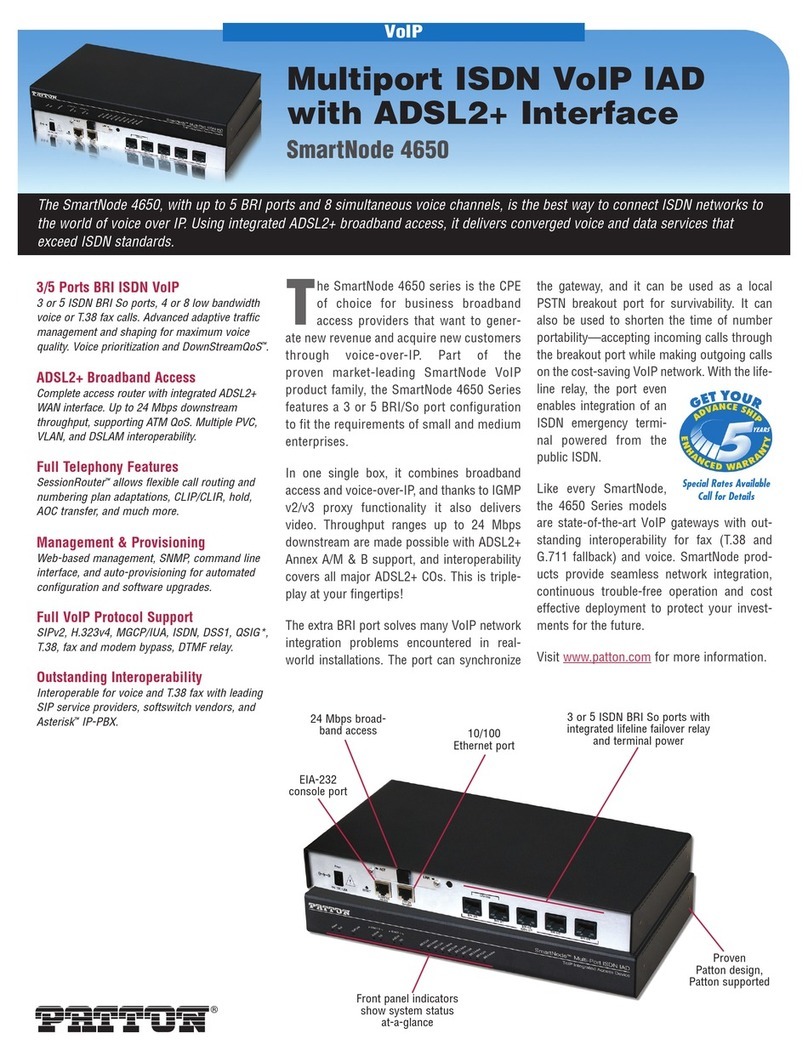
Patton electronics
Patton electronics SmartNode 4650 User manual
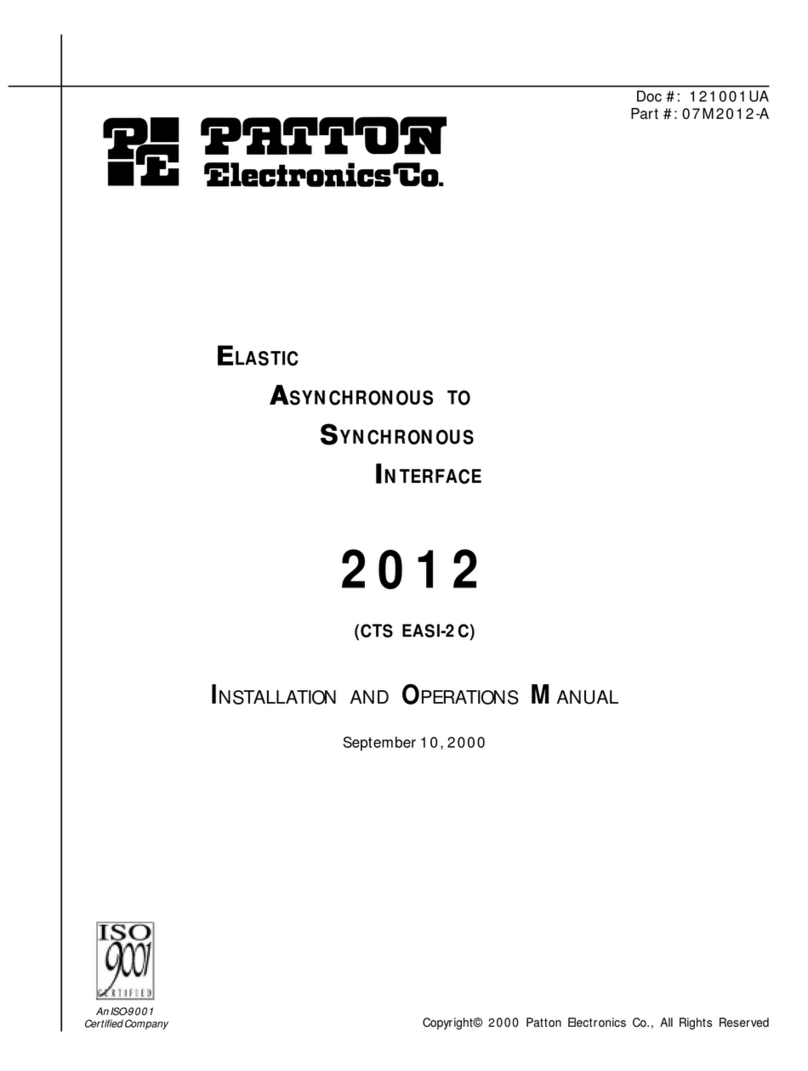
Patton electronics
Patton electronics 2012 User manual
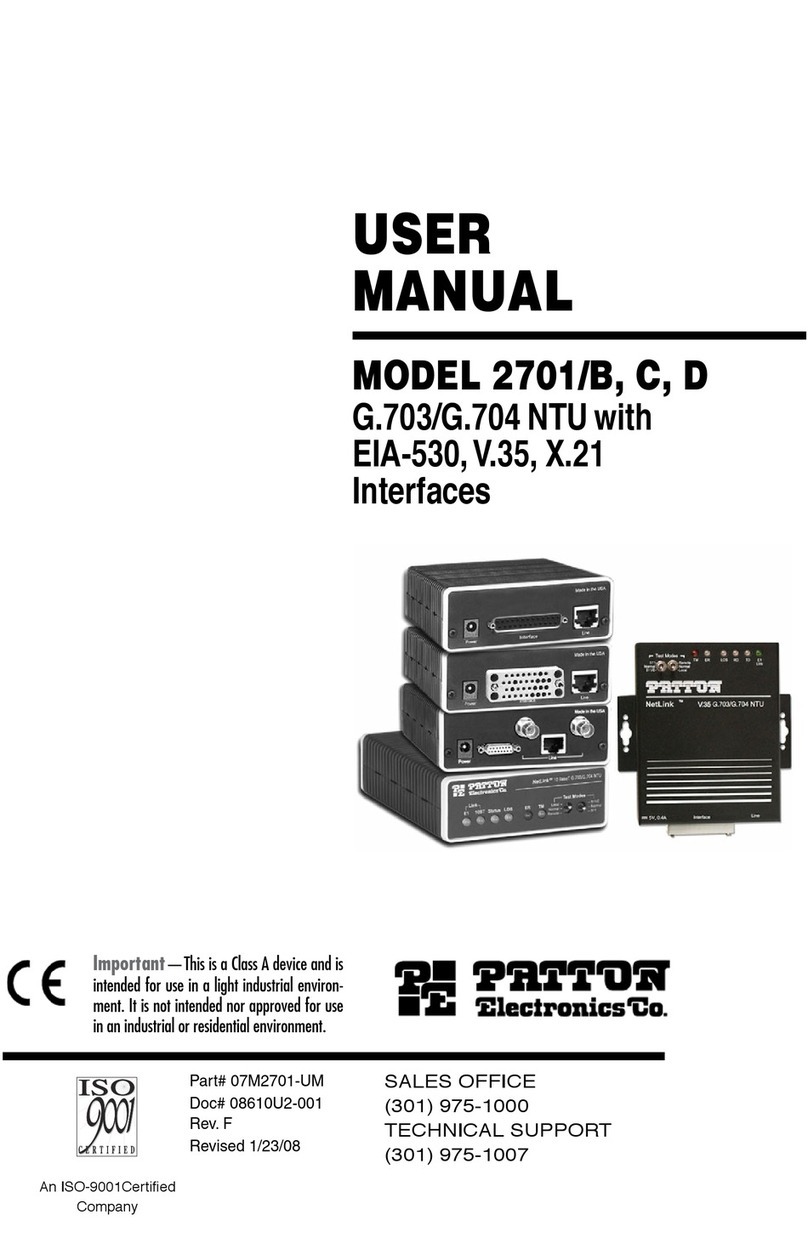
Patton electronics
Patton electronics NetLink 2701/B User manual
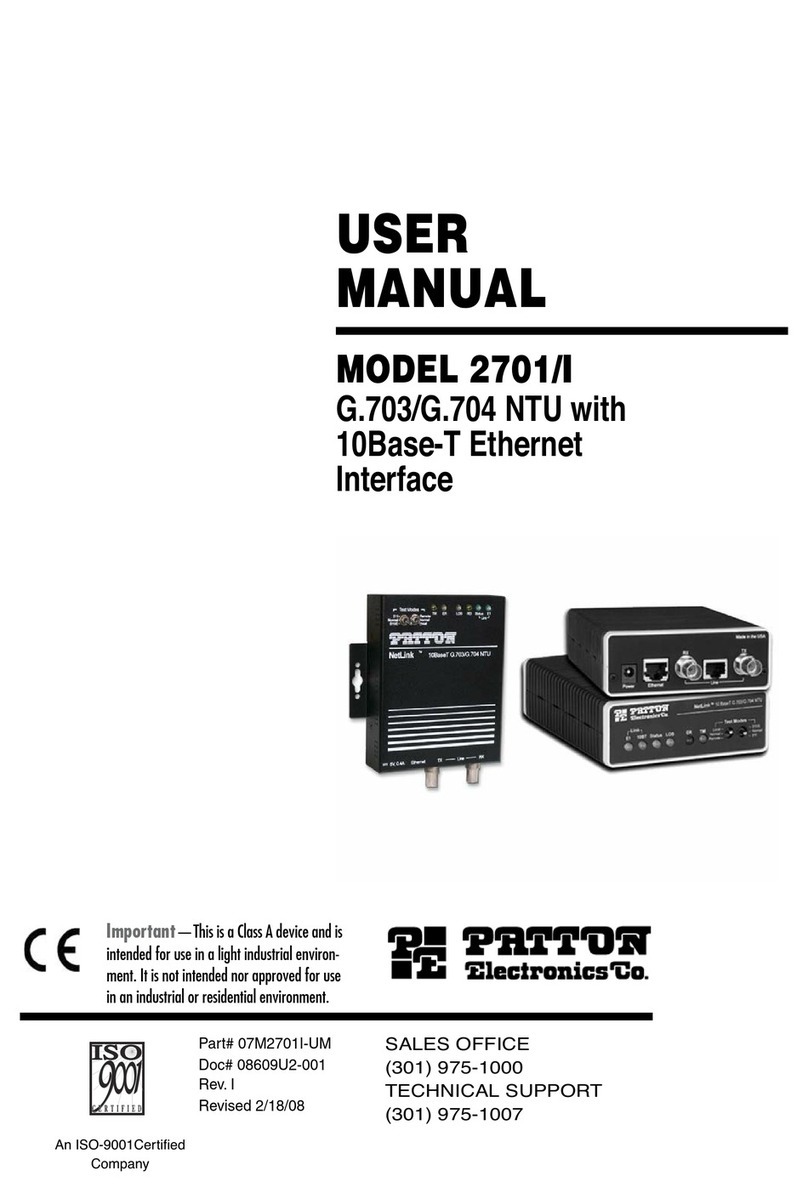
Patton electronics
Patton electronics NetLink 2701/I User manual
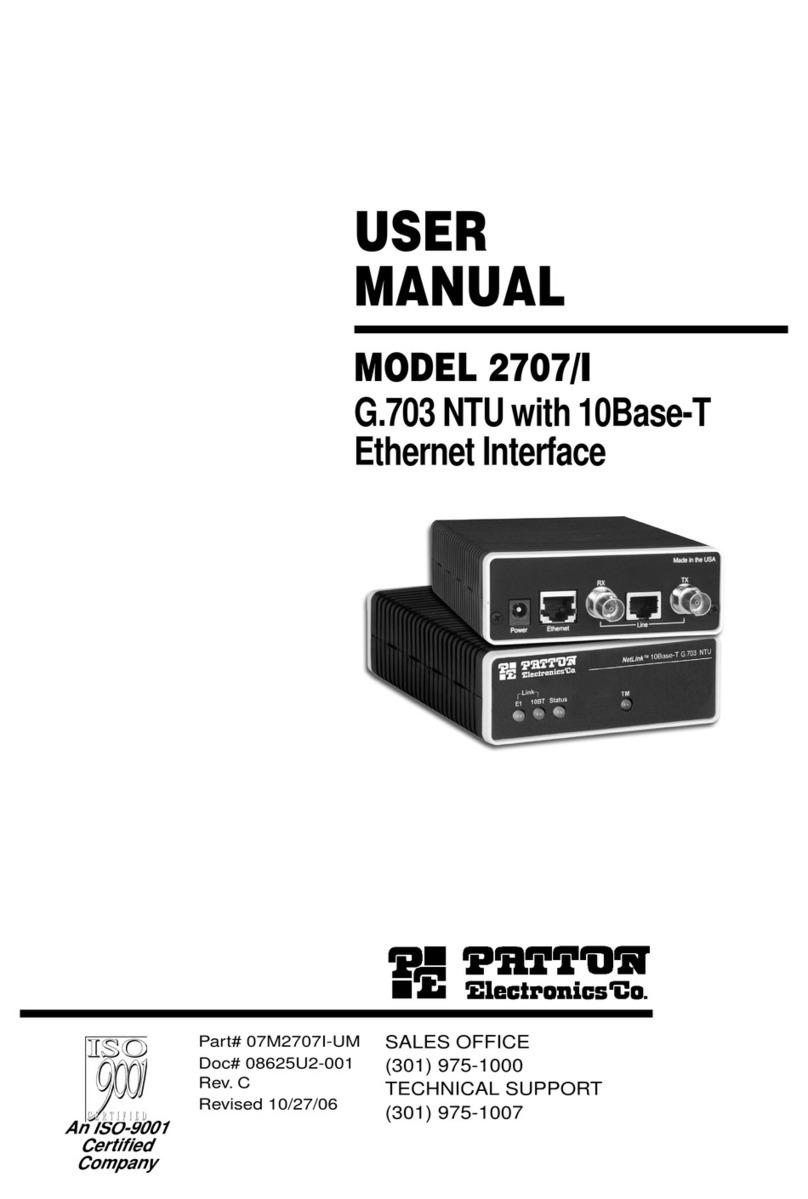
Patton electronics
Patton electronics Netlink 2707/I User manual

